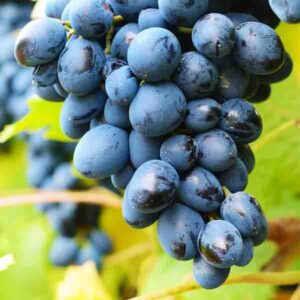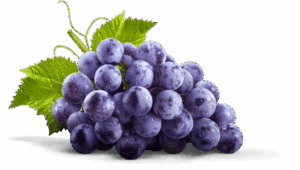Mars Grapes
Mars Grapes are a blue seedless variety developed for fresh eating, juice, and even light winemaking. They are valued for their sweet flavor, crisp texture, and hardiness, making them a favorite among home growers and consumers.
General Characteristics
-
Type: American hybrid grape, part of the Vitis labrusca family.
-
Origin: Released in 1985 by the University of Arkansas Fruit Breeding Program.
-
Flavor: Sweet, mild, and less “foxy” than Concord; often described as fruity and refreshing.
-
Seeds: Seedless.
-
Use: Primarily for fresh eating and juice, but also suitable for jelly, jams, and light wines.
Growth & Harvest
-
Ripening: Mid-season, generally ripening in late August to early September.
-
Vine: Vigorous and productive, with strong growth habit.
-
Clusters: Medium to large, with firm, attractive blue berries.
-
Cold Hardiness: Very hardy; tolerates winter temperatures down to about -20°F.
-
Disease Resistance: Known for high resistance to black rot, powdery mildew, and downy mildew, making it a low-maintenance choice.


Advantages
-
Seedless, making them very desirable for fresh eating.
-
Sweet, mild flavor that appeals to a wide range of tastes.
-
Mid-season ripening, ready in late August to early September.
-
Excellent disease resistance (especially against black rot, powdery mildew, and downy mildew).
-
Cold hardy and reliable, even in northern growing regions.
-
Low-maintenance, great for home gardeners and small vineyards.
Disadvantages
-
Flavor is milder and less complex compared to wine grapes like Marquette.
-
Berries are smaller than some newer commercial table grape varieties.
-
While suitable for juice and jelly, they are not a top choice for premium winemaking.
If you’re looking for a hardy, low-maintenance, seedless grape that thrives in a wide range of climates, Mars is an excellent choice.
